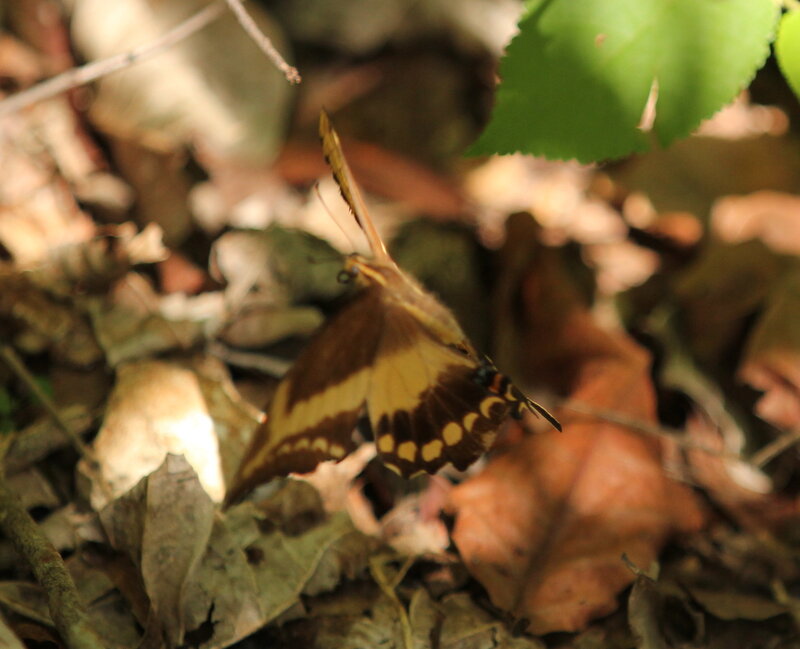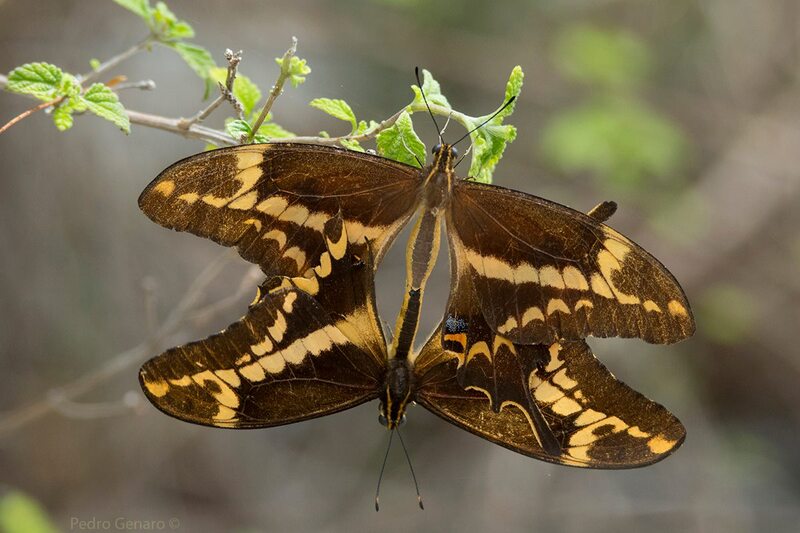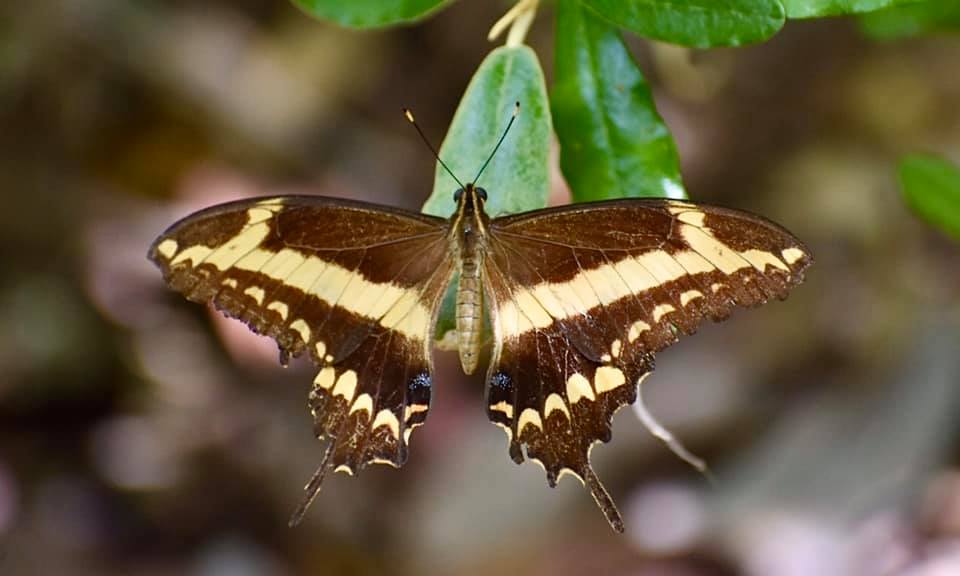Papilionidae : Papilioninae
Heraclides ponceana (Godart, 1819)
Dusky Swallowtail
Heraclides ponceana (Godart, 1819)
Dusky Swallowtail
Previously known as: Heraclides aristodemus but name changed to H. ponceana by Zhang et al (2020).
Description and Similar Species: Wingspan 94-118mm. Sexes similar though females are larger and have fuller wings. The two confusion species are the similar-sized Oviedo's Swallowtail H. oviedo and Bahaman Swallowtail H. andraemon. The paler brown colour at the base of the wings is visible in flight and is diagnostic when you are familiar with it. In the field the underside is very similar to H. oviedo except for the tails which are shorter and non-spatulate with no yellow 'inserts'. Distinguished from H. andraemon by the narrower yellow bar on the forewing and a row of sub-terminal yellow spots on both upperwings.
Range: Endemic to the Caribbean and Florida. It is found also on Hispaniola, Mona Island, Puerto Rico and Cayman Island. The subspecies temenes is found on Cuba and Little Cayman.
Status: Rare though said to be sometimes common on the southern shores at the east end of the island.
Nectar Plants: Bauhinia, Tournefortia, Cordia, Lantana and Pithecellobium. It is also found taking moisture and salts on damp ground.
Larval Foodplants: Citrus aurantium, Amyris elemifera and A. balsamifera (Rutaceae) and Zanthoxylum.
Description and Similar Species: Wingspan 94-118mm. Sexes similar though females are larger and have fuller wings. The two confusion species are the similar-sized Oviedo's Swallowtail H. oviedo and Bahaman Swallowtail H. andraemon. The paler brown colour at the base of the wings is visible in flight and is diagnostic when you are familiar with it. In the field the underside is very similar to H. oviedo except for the tails which are shorter and non-spatulate with no yellow 'inserts'. Distinguished from H. andraemon by the narrower yellow bar on the forewing and a row of sub-terminal yellow spots on both upperwings.
Range: Endemic to the Caribbean and Florida. It is found also on Hispaniola, Mona Island, Puerto Rico and Cayman Island. The subspecies temenes is found on Cuba and Little Cayman.
Status: Rare though said to be sometimes common on the southern shores at the east end of the island.
Nectar Plants: Bauhinia, Tournefortia, Cordia, Lantana and Pithecellobium. It is also found taking moisture and salts on damp ground.
Larval Foodplants: Citrus aurantium, Amyris elemifera and A. balsamifera (Rutaceae) and Zanthoxylum.
Foodplants and Habitat







